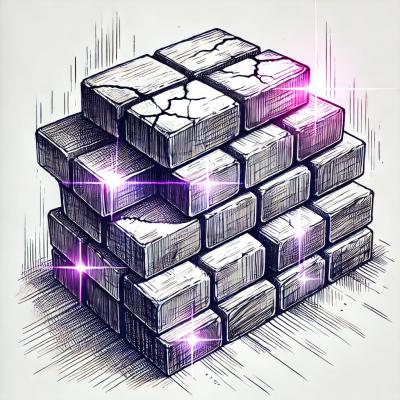
Research
Security News
Malicious npm Packages Inject SSH Backdoors via Typosquatted Libraries
Socket’s threat research team has detected six malicious npm packages typosquatting popular libraries to insert SSH backdoors.
Maps API is a powerful tool for integrating interactive and customizable maps into your **react** web applications. Whether you need to display geographical data, create custom map visualizations, or provide location-based services, Maps API has you cover
Maps API is a powerful tool for integrating interactive and customizable maps into your react web applications. Whether you need to display geographical data, create custom map visualizations, or provide location-based services, Maps API has you covered.
Follow these steps to quickly get started with Maps API:
Include the Leaflet Library:
To ensure proper map rendering, add the Leaflet library to your HTML file by including the following code in the <head> section:
<link rel="stylesheet" href="https://unpkg.com/leaflet@1.9.4/dist/leaflet.css"
integrity="sha256-p4NxAoJBhIIN+hmNHrzRCf9tD/miZyoHS5obTRR9BMY="
crossorigin=""/>
<script src="https://unpkg.com/leaflet@1.9.4/dist/leaflet.js"
integrity="sha256-20nQCchB9co0qIjJZRGuk2/Z9VM+kNiyxNV1lvTlZBo="
crossorigin=""></script>
These lines of code ensure that you have access to the Leaflet library, which is the foundation for Maps API.
Create a Simple Map:
In your JavaScript code, create a basic map component in your web application:
const mapObject = createMap({}); // Initialize the map using the Maps API
function App() {
const [MapBox, map] = useMap(mapObject);
return (
<div style={{ position: "absolute", left: 0, right: 0, top: 0, bottom: 0 }}>
<MapBox>
{/* You can add additional components to display on the map here */}
</MapBox>
</div>
);
}
This code sets up a map component using Maps API within a React application. You can customize and add other components to display on the map.
Add a Marker to the Map:
To add a marker to the map, you can use the useMap hook to access the map object and create the marker as follows:
const [MapBox, map] = useMap(mapObject, {
onLoad: (map) => {
const marker = map.createMarker([50.0, 14.0], () => {
return <div>Marker</div>; // You can customize the marker content
});
marker.initialize(); // Initialize the marker
}
});
This code uses the onLoad callback of the useMap hook to create and initialize a marker at the specified coordinates on the map. You can customize the content of the marker as needed.
To add a GeometryMarker to the map, you can use the useMap hook to access the map object and create the GeometryMarker as follows:
const [MapBox, map] = useMap(mapObject, {
onLoad: (map) => {
const geometryMarker = map.createGeometryMarker(
[[[50.0, 14.0], [50.1, 14.1]], "line"],
() => {
return <div>Marker</div>; // You can customize the marker content
}
);
geometryMarker.initialize(); // Initialize the GeometryMarker
}
});
This code uses the onLoad callback of the useMap hook to create and initialize a GeometryMarker on the map. The GeometryMarker can represent various geometric shapes like lines or polygons, and you can customize the content of the marker as needed.
Add Elements to Layers:
To organize and manage elements on your map, you can create layers and add elements to them. Here's how you can create a layer and add markers to it:
const [MapBox, map] = useMap(mapObject, {
onLoad: (map) => {
const layer = map.createLayer(); // Create a new layer
// Create markers and customize their content
const m1 = map.createMarker([50.0, 14.0], () => {
return <div>Marker 1</div>;
});
const m2 = map.createMarker([50.1, 14.1], () => {
return <div>Marker 2</div>;
});
layer.add([m1, m2]); // Add markers to the layer
layer.initialize(); // Initialize the layer
// You can create more layers and add different types of elements as needed
}
});
This code demonstrates how to create a layer, add markers to it, and initialize the layer. Layers help you organize and manage different elements on your map effectively, providing flexibility and control over what is displayed.
Add a Cluster Layer:
To group nearby markers into clusters for improved map readability, you can create a cluster layer. Here's how you can add a cluster layer to your map:
const [MapBox, map] = useMap(mapObject, {
onLoad: (map) => {
const clusterLayer = map.createClusterLayer((count) => {
return <div>{count}</div>;
});
// You can customize the cluster layer's content to display the count or any other information you prefer.
// Add markers to the map (as shown in the previous section), and the cluster layer will automatically group them.
// You can also customize cluster styling and behavior as needed.
// Cluster layers provide a convenient way to handle numerous markers in a user-friendly manner.
}
});
This code demonstrates how to create a cluster layer and customize its content. Cluster layers automatically group nearby markers, making it easier for users to interact with maps that contain many markers.
Maps API offers a wide range of advanced features and customization options, including:
You can explore these features and more in the Maps API documentation.
If you encounter any issues, have questions, or need assistance, our Maps API community and support resources are here to help. Explore our documentation, visit our community forums, or contact our support team for guidance and solutions.
Get started with Maps API and unlock the potential of location-based data and services in your web applications.
FAQs
Maps API is a powerful tool for integrating interactive and customizable maps into your **react** web applications. Whether you need to display geographical data, create custom map visualizations, or provide location-based services, Maps API has you cover
We found that maps-api demonstrated a healthy version release cadence and project activity because the last version was released less than a year ago. It has 1 open source maintainer collaborating on the project.
Did you know?

Socket for GitHub automatically highlights issues in each pull request and monitors the health of all your open source dependencies. Discover the contents of your packages and block harmful activity before you install or update your dependencies.

Research
Security News
Socket’s threat research team has detected six malicious npm packages typosquatting popular libraries to insert SSH backdoors.

Security News
MITRE's 2024 CWE Top 25 highlights critical software vulnerabilities like XSS, SQL Injection, and CSRF, reflecting shifts due to a refined ranking methodology.

Security News
In this segment of the Risky Business podcast, Feross Aboukhadijeh and Patrick Gray discuss the challenges of tracking malware discovered in open source softare.